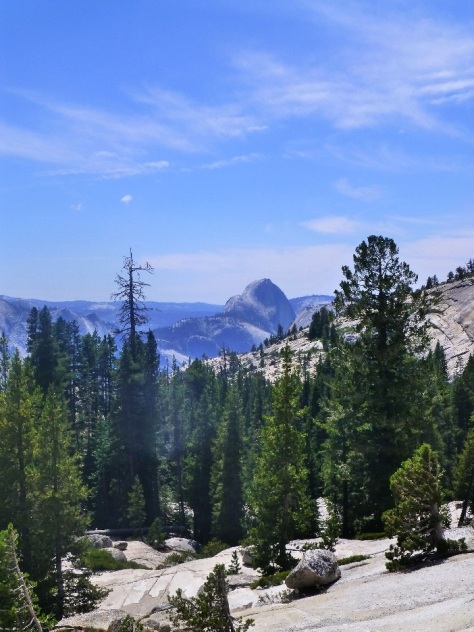Article by Emma Evans, Senior Geophysicist, ION
Approximately 3 miles east of Bath near the village of Bathford in Somerset is the Nature reserve of Browns Folly. Underneath the nature reserve is Browns Folly Mine, a large complex of tunnels and caverns created by the demand for Bath stone to build the Georgian city. Part of the complex was subsequently used by the MOD as an ammunition depot during World War II. In recent years the tunnels have become popular with cavers and occasional partygoers and are also home to a number of geocaches including an Earthcache – GC4P440 – Below Above – The Treacle Mine.
Visiting the mines is quite an experience. We visited three different sections and accessing the tunnels ranged in difficulty from remembering to duck to crawling through a tunnel reminiscent of The Great Escape. Once inside however the tunnels are roomy and easy to negotiate for the most part with the occasional hands and knees crawl or scramble over discarded stone (deads) or fallen roof slabs.

The mines are nothing less than a particularly evocative museum. Mining equipment remains where it was left and footprints from hobnail boots are clearly visible alongside horseshoe prints in the mud (future Anthropocene ichnofossils perhaps). Writing on the walls shows what appear to be customer orders and also the occasional prayer. Unfortunately many of the old rail tracks have been stolen for scrap metal, at least one entrance has been partly filled in by a local caving club to limit access in an attempt to prevent further vandalism, but some do remain and the deep imprint of rails and sleepers is clearly visible. The older parts of the mine pre date the rails and were the domain of horse drawn mine carts. Deep ruts are evidence of the passage of the heavily laden carts and the small stable with its three hitching points is a sobering reminder of how miserable life must have been for the horses. My children also now have a far better appreciation of my occasional threat to send them down the mines.
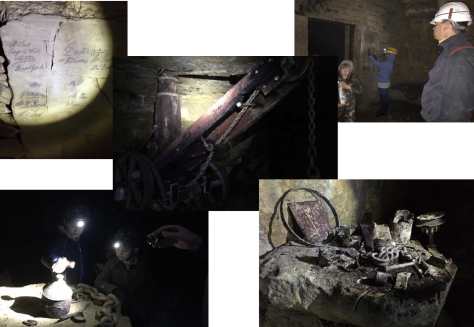
Evidence of mining activity is also present in the rock with tool marks visible on walls and ceilings and soot marks extending up above the candle niches. In numerous places there are rope marks on the walls and parts of the wall cut away to allow the passage of mine carts around the corners. There are also a number of apparently finished blocks of stone left abandoned at the sides of the tunnels for unknown reasons.
Mining artefacts are not the only attraction in this subterranean world. Old wooden props host mushrooms which glow eerily in the light of a UV torch. Cave formations (speleothem) are in evidence in the form of cave pearls and gours. In a number of places these formations are marked by a ring of stones to prevent them from being trampled. Bats also live in these tunnels although we didn’t see any on this occasion.
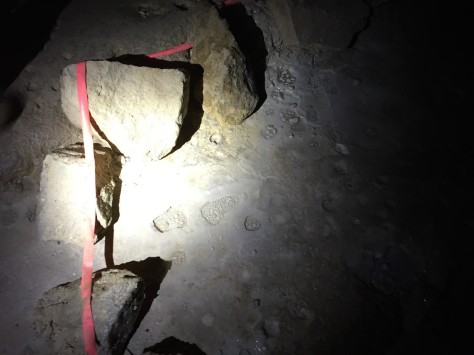
The Earthcache itself is known as The Treacle Mine. This is a nod to an old joke which has been played on the gullible since at least the nineteenth century. It is split into two locations showing two different formations of “Treacle” (calcite and other minerals precipitated from the cave water). At the first location the mineral flows down a vertical wall over decades of graffiti. At the second there are stalactites forming as the water drips down from the roof forming flow deposits on the floor below and the occasional pillar as stalactite meets stalagmite.
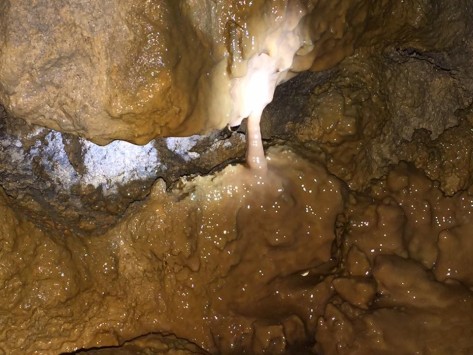
Having thoroughly explored the tunnels, finding a total of five geocaches we exited through an impressive cavern known as Clapham Junction for perhaps obvious reasons. The cavern itself was formed by the pillar and room mining technique in which blocks of stone are removed but wide pillars are left behind to hold the roof up. The overall effect is of a mediaeval vault on a staggering scale.
The mines are a fascinating place to visit but can be dangerous due to the two main risks of roof fall and getting lost. Go with a guide if you possibly can, maps are also available. Take at least two torches preferably at least one head torch to leave your hands free and wear a hard hat. You will bang your head. Full access conditions and equipment recommendations are available at GC4JEK6 – Below Above – A Tour in Brown’s.

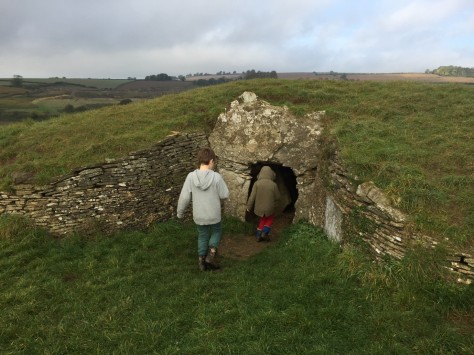
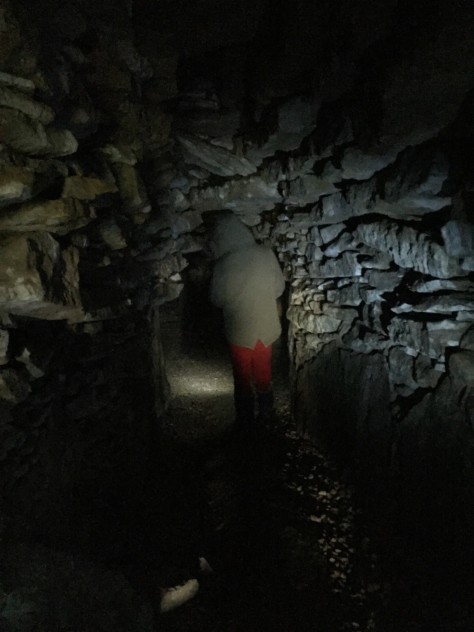


 One of the great industrial innovations of the late 18th century was the canal, used to transport goods to market it was one of the catalysts of the industrial revolution, and a marvel of innovation and engineering. I confess to having spent many enjoyable days, holidaying with family and friends on canals in narrow boats, or as they are often called “pleasure boats”. The latter indicating a transformation from transporting of goods for commerce to that of people for pleasure. At the end of the day mooring by a canal-side inn for a beer is to me one of life’s greatest pleasures.
One of the great industrial innovations of the late 18th century was the canal, used to transport goods to market it was one of the catalysts of the industrial revolution, and a marvel of innovation and engineering. I confess to having spent many enjoyable days, holidaying with family and friends on canals in narrow boats, or as they are often called “pleasure boats”. The latter indicating a transformation from transporting of goods for commerce to that of people for pleasure. At the end of the day mooring by a canal-side inn for a beer is to me one of life’s greatest pleasures.


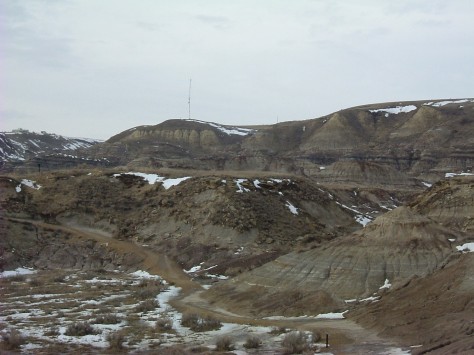
 Albertosaurus sarcophagus with attitude
Albertosaurus sarcophagus with attitude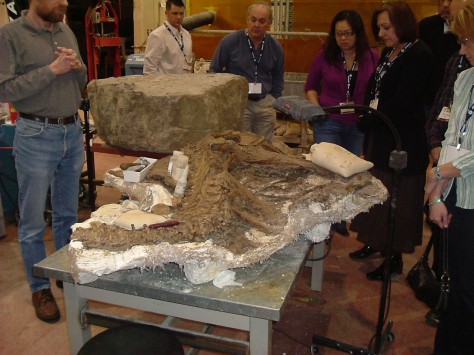 Preparation laboratory
Preparation laboratory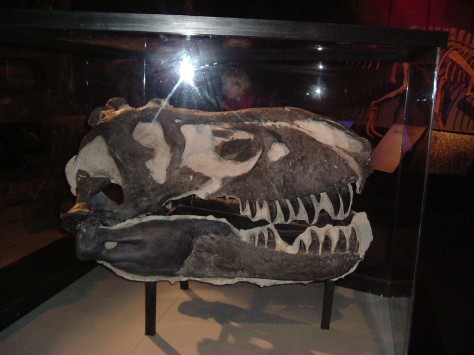 Now where did Steven Spielberg get the idea for Jurassic Park!
Now where did Steven Spielberg get the idea for Jurassic Park!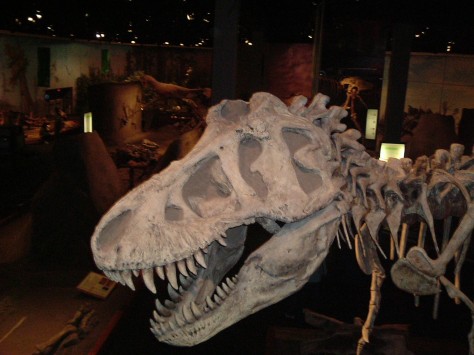 Walkies!!!
Walkies!!! Two years ago decided, as a family, we decided to undertake a road trip across south-western America, taking in Las Vegas, Palm Springs, Los Angeles, and San Francisco. Being put in charge of coming up with the itinerary, it was perhaps not surprising that I came up with some geological stops en-route. Our tour traversed parts of the relatively stable Colorado Plateau, the more heavily-deformed “Basin and Range” Province, as well as the tectonic crush zone that is the Californian Pacific Coast. The first two legs of this trip, from Las Vegas to Los Angeles via the Grand Canyon, and then onwards to San Francisco and Yosemite, I described in the first two instalments. This third and last piece covers the section from Yosemite back to Las Vegas via Death Valley.
Two years ago decided, as a family, we decided to undertake a road trip across south-western America, taking in Las Vegas, Palm Springs, Los Angeles, and San Francisco. Being put in charge of coming up with the itinerary, it was perhaps not surprising that I came up with some geological stops en-route. Our tour traversed parts of the relatively stable Colorado Plateau, the more heavily-deformed “Basin and Range” Province, as well as the tectonic crush zone that is the Californian Pacific Coast. The first two legs of this trip, from Las Vegas to Los Angeles via the Grand Canyon, and then onwards to San Francisco and Yosemite, I described in the first two instalments. This third and last piece covers the section from Yosemite back to Las Vegas via Death Valley.



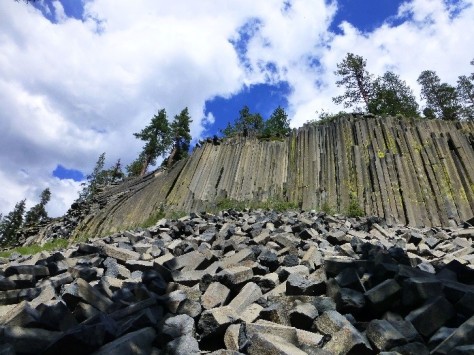
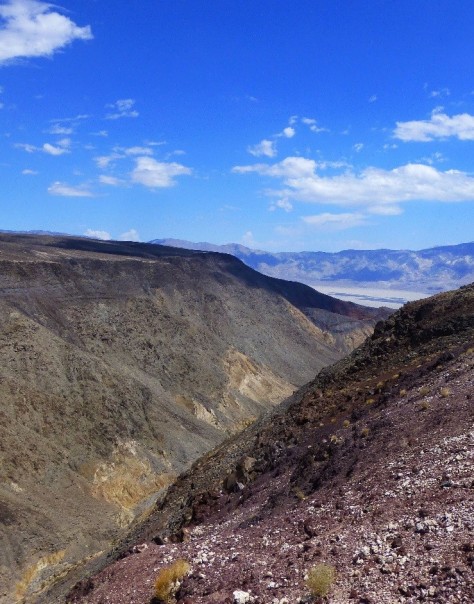

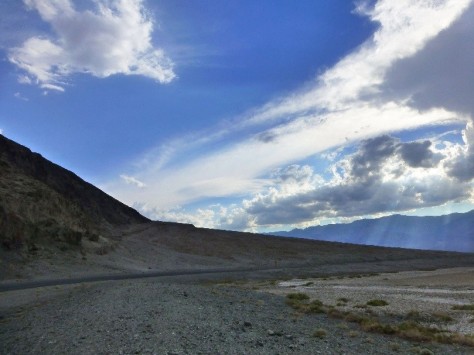

 It was two years ago that we agreed to have an extra-special family summer holiday. Deciding on a road trip across part of America, my family came up with a list of places to visit: Las Vegas, Palm Springs, Los Angeles, San Francisco … All I had to do was come up with the itinerary. Some surfing around the region via Google Earth showed that it would be possible to link the above cities with some very interesting geological localities indeed, traversing parts of the relatively stable Colorado Plateau, the more heavily-deformed “Basin and Range” Province, as well as the tectonic crush zone that is the Californian Pacific Coast.
It was two years ago that we agreed to have an extra-special family summer holiday. Deciding on a road trip across part of America, my family came up with a list of places to visit: Las Vegas, Palm Springs, Los Angeles, San Francisco … All I had to do was come up with the itinerary. Some surfing around the region via Google Earth showed that it would be possible to link the above cities with some very interesting geological localities indeed, traversing parts of the relatively stable Colorado Plateau, the more heavily-deformed “Basin and Range” Province, as well as the tectonic crush zone that is the Californian Pacific Coast. Arriving in Los Angeles, we had a couple of days in which the geology took a back-seat. The famous “La Brea” tar-pits are surprisingly located only a mile from Beverly Hills and Hollywood, although sadly I never got around to visiting them. But I could rest assured with the knowledge that numerous prolific oil fields are located directly beneath the city. In the case of La Brea, it is underlain by the Salt Lake Field, which produced over 50 million barrels of oil between 1902 and abandonment in 2001 to make way for a new shopping mall. The Los Angeles petroleum system developed in deep pull-apart basins controlled by the San Andreas Fault, with oil in Miocene sandstone reservoirs trapped within complex thrust-cored anticlines. There’s surprisingly little to tell these days of the city’s oily heritage, although one obvious exception is a series of oil production platforms clearly visible a short
Arriving in Los Angeles, we had a couple of days in which the geology took a back-seat. The famous “La Brea” tar-pits are surprisingly located only a mile from Beverly Hills and Hollywood, although sadly I never got around to visiting them. But I could rest assured with the knowledge that numerous prolific oil fields are located directly beneath the city. In the case of La Brea, it is underlain by the Salt Lake Field, which produced over 50 million barrels of oil between 1902 and abandonment in 2001 to make way for a new shopping mall. The Los Angeles petroleum system developed in deep pull-apart basins controlled by the San Andreas Fault, with oil in Miocene sandstone reservoirs trapped within complex thrust-cored anticlines. There’s surprisingly little to tell these days of the city’s oily heritage, although one obvious exception is a series of oil production platforms clearly visible a short  distance offshore of the coast between Santa Monica and Santa Barbara, northwest of Los Angeles.
distance offshore of the coast between Santa Monica and Santa Barbara, northwest of Los Angeles.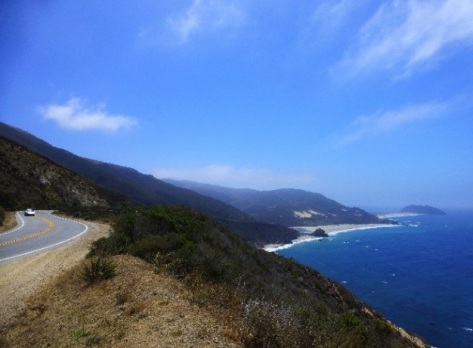

 ory and to propose a visit here would have incited my family to mutiny.
ory and to propose a visit here would have incited my family to mutiny.
